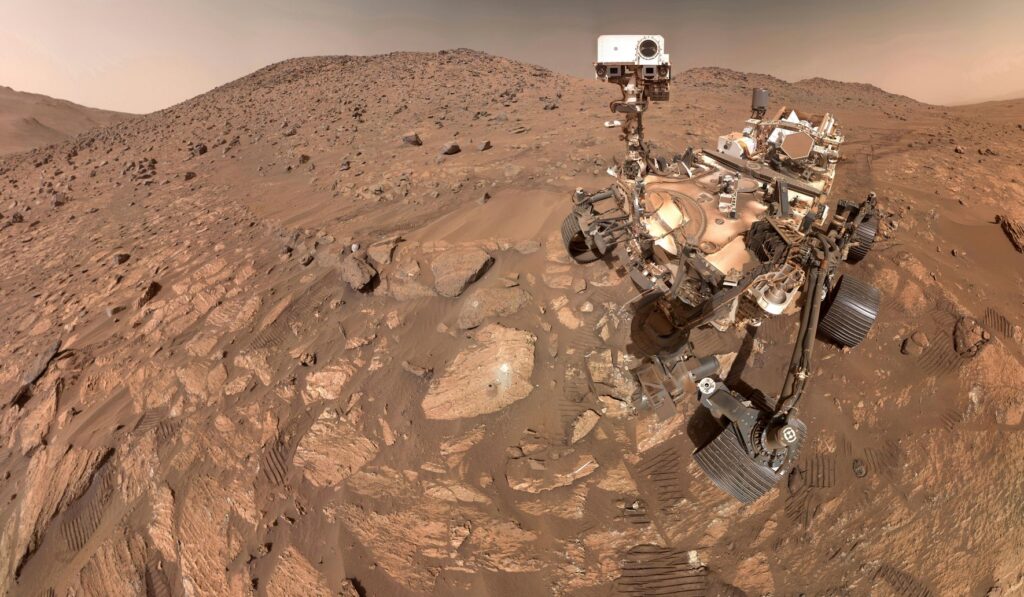Perseverance’s microphone picked up electrical crackles on Mars, giving scientists a new, direct way to study Martian storms and atmospheric electricity.
Scientists have discovered evidence of lightning on Mars through audio recordings captured by NASA’s Perseverance rover’s microphone, marking a groundbreaking find in planetary science. The recording offers the first clear acoustic sign that high-voltage discharges happen in the Red Planet’s thin air. That kind of firsthand sound gives researchers a different kind of data than the usual images and orbital measurements.
The microphone aboard Perseverance, designed to record local sounds and rover activity, proved capable of catching transient electrical events when conditions lined up. Signal analysts combed the audio for short, sharp signatures that stand out against wind and mechanical noise. Those signatures matched expectations for electrical discharges, and cross-checks with contextual sensor readings reduced the chance of false positives.
Direct acoustic evidence matters because Mars’ atmosphere is less than 1% of Earth’s sea-level pressure, changing how sparks form and propagate. Electrical activity there won’t look exactly like terrestrial lightning, but discharge processes, like arcing and streamer formation, still generate pressure waves that a sensitive microphone can pick up. Finding those pressure waves validates models that predicted electrical processes during dust lifting and in stormy conditions.
Beyond proving that discharges occur, the recordings help pin down where and when they happen on Mars, which is critical for understanding the planet’s weather. If discharges correlate with dust events or particular seasons, scientists can refine climate models and the physics of dust transport. That in turn changes how we think about long-term surface chemistry and the movement of charged particles in the Martian environment.
There are practical implications for missions and instruments too. Electrical discharges can affect electronics, generate local chemistry, and alter the near-surface radiation environment. Mission planners need to factor in transient electrical hazards and secondary chemical effects when designing hardware for long-lived surface stays. These findings will feed into engineering margins and operational planning for future landers and human explorers.
Acoustic detection complements other methods like radio receivers, optical imaging, and in-situ electric field probes by offering an independent observational channel. Sound recordings are especially useful for short-duration events that might be missed by slower or less localized sensors. Combining audio with other datasets strengthens confidence in interpretations and helps separate real electrical phenomena from instrument artifacts or environmental noise.
Scientists will now expand searches through the growing archive of Perseverance audio and coordinate observations with orbital platforms to map electrical activity over broader regions. That multi-instrument strategy can reveal whether the recorded discharges are isolated curiosities or part of a regular Martian weather pattern. As data accumulates, models can be tuned to estimate discharge frequency, energy, and their role in shaping surface and atmospheric chemistry.
The discovery also prompts new lab work under Mars-like conditions to reproduce the acoustic signatures and better understand discharge mechanics in thin CO2-dominated air. Controlled experiments and simulations will inform interpretation of future recordings and help design optimized sensors. The bottom line is that sound has joined imaging and telemetry as a powerful tool for decoding the dynamics of another planet.



